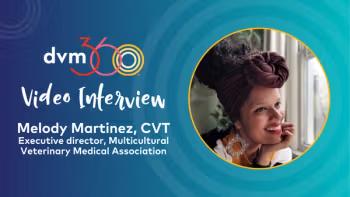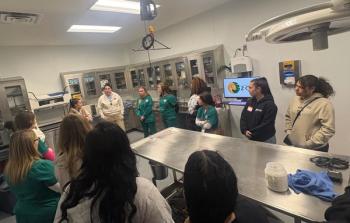
Real clients reveal why they love their veterinary practices
Real clients share what keeps them going back to their practices.
We asked pet owners nationwide why they love—or hate—their veterinarians. A common denominator emerged: Clients want a veterinary team that seems to care about their pets as much as they do.
This shouldn't shock you. Besides the mounting research that illustrates an ever-expanding human-animal bond, you see the pet-people connection daily. It's evident in the wrinkled palm that gently strokes a graying dog and in the eyes of a child who cradles a tiny kitten. And it's a testament to your work and passion for pets.
But do clients get a true sense of your fervor and dedication to caring for patients? As you read pet owners' true accounts on the following pages, imagine whether your clients might utter the same words. (Maybe they already did!) Then consider the dos and don'ts to determine whether you could do more to let your loving service shine through.
Client comment
"My ferret, Scout, was bit by my roommate's dog. She took my pet to the closest veterinarian. When I arrived, the doctor let me hold Scout and gave me time alone with her before I left for the night. Scout didn't make it. But the doctor was so gentle and caring—the practice even sent a sympathy card—I've gone there ever since."
Give a fond farewell
End-of-life issues are heartbreaking for sure, and they're the life-changing experiences your clients will always remember when they think of your practice. Hopefully you'll be able to make the related experiences as pain-free as possible.
DO
1. Provide a comfort room for euthanasia.
2. Wait patiently. Allow clients to spend as much time as they need with the pet after a euthanasia. Grant this same time for good-byes following an unexpected death.
3. Operate discreetly. Usher the pet and clients to the comfort area as soon as they reach the practice. "They're usually very emotional at that point," says Pam Weakley, Firstline Editorial Advisory Board member and practice manager at Dickman Road Veterinary Clinic in Battle Creak, Mich. "They still have to wait their turn, but they can wait privately and spend some time with their pet."
DON'T
1. Schedule appointments that are days away. "Once clients make the decision to euthanize their pets, they don't want to have to wait," Weakley says. "They've realized that they need to do this, and they need to do it now. So we work them in whenever and wherever we can."
Take your service to great
Get the lights right. "We have small lights on the counters, so when the doctor has performed a euthanasia we turn the overhead lights off, so the harsh brightness of the light is gone," Weakley says.
Offer curb-side service or home visits. "We don't do it often, but if clients want us to come out to their van or truck—not the back seats of cars—to perform the euthanasia, we will do that," Weakley says. However, she and her team members first encourage the client to let them assist with bringing the pet inside. For clients who want to avoid the clinic altogether, Weakley refers them to a mobile veterinarian in the area who makes house calls.
Show your sympathy. A simple remembrance, from a card to a planter, shows you're still thinking about clients after they leave your practice.
Client comment
"I like my veterinary practice because it's clean."
Keep it spotless
Many practices hire janitorial services to clean in the evenings. But starting the day with a sparkling facility doesn't mean finishing with one. Feet track in muddy foot- and pawprints. Pets pee. Kids tattoo every surface of your waiting room with their sticky fingers. And that's just before lunch. Would your practice pass a surgical, er, white-glove test?
DO
1. Make good scents. Use air fresheners and air purifiers to eliminate odors and dust.
2. Ask for help. If pets tinkle on the waiting room tiles during rush hour, the front desk staff should call team members in the back for wipe-up help, Weakley says. "Act quickly so a person or animal doesn't walk through it and track the mess through the rest of the building," she says.
DON'T
Walk the other way. "Cleaning up is everyone's responsibility," Weakley says. "I'm the practice manager and don't work with the animals. But if I walk through the front and there's a puddle, I get the mop and clean it up as soon as I notice it."
Take your service to great
Divide and conquer. One of the best ways to eliminate odors is to install more than one furnace in your practice. You can't change this easily, but if your practice is planning to remodel or build anew, multiple units will make all the difference. "A lot of buildings are very small and have only one furnace or HVAC system, so when air recirculates, it gets pulled out of back areas, such as the kennel, and pushed to the front. That's why some practices smell like cat pee," Weakley says. "We have six different furnaces here, one for each part of the building, so we're not recycling the air through a single furnace system."
Client comment
"I like how friendly the team is when they handle pets. And they never say anything rude about my overly excited Labs."
Watch your mouth—and pets'
If you can make visiting your practice a more stress-free experience for pets and their parents, you're sure to win hearts. But this is tricky. You want to be courteous, but you also must be cautious of the risks your friskier—which often means fearful—furred friends pose to you and your team members.
DO
Offer an alternative waiting area. Make the most of your practice's space. "For animals that are nervous, unruly, or not properly socialized, we ask those clients if they'd like to wait in the exam room or, in nice weather, on the front porch," Weakley says. "Sometimes clients will ask if they can wait in the car with their pet. Most clients appreciate having a place where they can sit without causing a scene."
DON'T
See disorderly pets' before other waiting patients. Clients will notice and may be offended.
Take your service to great
Lend a hand. Handling agitated or exuberant pets is plenty without adding a kid to the mix. "If a client visits with a baby or toddler and a dog, one of our team members will volunteer to help with the pet or look after the child while the client talks to the doctor," Weakley says. "This helps relieve some of the stress on the client."
Client comment
"The staff gives each dog very personal attention, and m any times we have gone to pick up the dogs to find them sitting on one of the assistant's laps at the counter or outside playing with an attendant."
Show clients your puppy love
Odds are, you really do cherish clients' pets as much as they do. And clients will appreciate your skills even more if you can demonstrate you've got the right equipment to care for their pets: a great big heart. You've heard the adage that clients can't judge your medicine, so they'll judge your service. The truth is, they hold high expectations for both. Give pet owners confidence in your work with a friendly, professional attitude.
DO
1. Remember the person who's on the other end of the leash. "If you really love your job, it comes out in how you take care of your clients," says Rachael Hume, a receptionist at Southway Animal Clinic in Lewiston, Idaho. "You've got to take that extra step to know your clients." You can demonstrate this through simple gestures, Hume says, such as smiling, making eye contact, and remembering the client's name, the pet's name and sex, and other personal details.
2. Realize your role. "Clients will tolerate a bad doctor, but not a bad team," says Dr. Ernest Ward, owner of Seaside Animal Care in Calabash, N.C. "Our doctors should be interchangeable. That experience of visiting your practice is what must remain constant and consistent. And the team plays a crucial role in whether clients are satisfied with your service."
DON'T
1. Judge clients. You'll be surprised by how many people you'll win over by simply giving them a chance, Hume says. "OK, so they're missing a few teeth or they don't dress very well or they drive a beat up old car, whatever their story is," she says. "You have to give people a chance to show you who they are."
2. Get too personal. It's important to keep your behavior professional to maintain healthy boundaries, Dr. Ward says. "We want our relationships with clients to be strong and bonded but professional," he says. "You can accomplish this by using courtesy titles, listening more than you speak, and avoiding discussing too much personal information." Instead of reciprocating if clients share private stories, offer your full attention and stay on topic about the pet's health and recommended care.
3. Forget the medicine. "We can't get by with our good looks and charm," Dr. Ward says. "We've got to practice high-quality medicine too." The bottom line: Pet owners appreciate results, so you need to deliver a healthy balance of compassion and medical care to build strong connections with them.
Take your service to great
Hire right. Managers, you're looking for team members with strong customer service skills, not just a love of animals. To find them, Weakley suggests conducting working interviews for top candidates. "They get a real feel for what the responsibilities will be," she says. "If they're hired for the kennels, they'll be walking dogs and picking up poop. Some people think this job is about holding puppies and kitties. That's not true. Those are the perks."
Client comment
"I like getting advice and affirmation that what I'm doing for my pet is good for its health."
Seize the chances to teach
Whether you're a brand new employee or a 10-year veteran, clients respect your opinion because you work at a veterinary practice. They want guidance from you every time they visit. So make sure you're reinforcing your practice's medical message.
DO
1. Offer handouts. "At our practice, we put people first and paper second," Dr. Ward says. "And they need to come in close order, because if you come into our hospital we want you to have some take-home evidence. Clients will recall the emotions of how they felt about the experience. Handouts offer tangible evidence of what they've received."
2. Get out the visuals. It's cliché but true: A picture is worth a thousand words. When doing dentals, for instance, show clients before and after photos of their pets teeth so they appreciate the health difference. If your practice performs orthopedic procedures, use a model of a knee joint to illustrate what the veterinarian will be doing in surgery.
DON'T
Stay quiet. You have a role, too, so make sure you're talking about all of the topics you're offering up on paper. "What we sell is information and peace of mind," Weakley says. "Take time to educate clients and answer their questions."
Take your service to great
Go high-tech. Client communication software and touchscreens enhance pet owner education. "We recently purchased a system and loaded it onto a couple laptops. It has hundreds of articles and videos that we use as learning tools for clients," Weakley says. "Our system also allows us to e-mail information to the clients at home so they can share it with other family members." These interactive options work well in exam rooms and can even be used in waiting areas to get a jump-start on educating clients.
The overall message from these true stories: "Clients want us to demonstrate compassion for their pet," Dr. Ward says. "They're more interested in how we care for their pet than them. So the way to forge strong client bonds is to love those pet patients."
Portia A. Stewart is a freelance writer and former Firstline editor in Lenexa, Kan. Please send comments to
Newsletter
From exam room tips to practice management insights, get trusted veterinary news delivered straight to your inbox—subscribe to dvm360.






